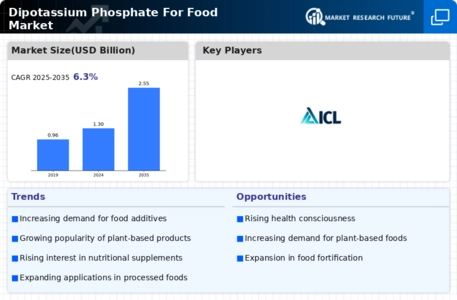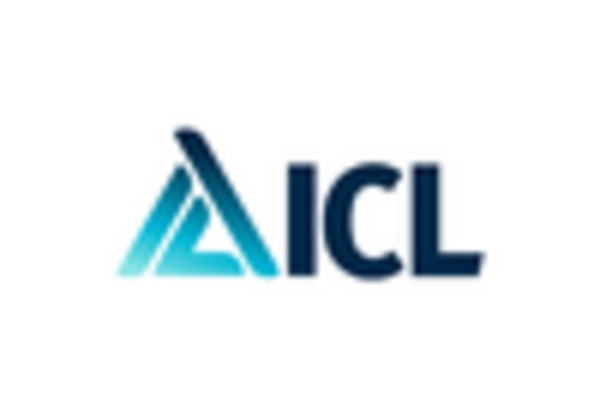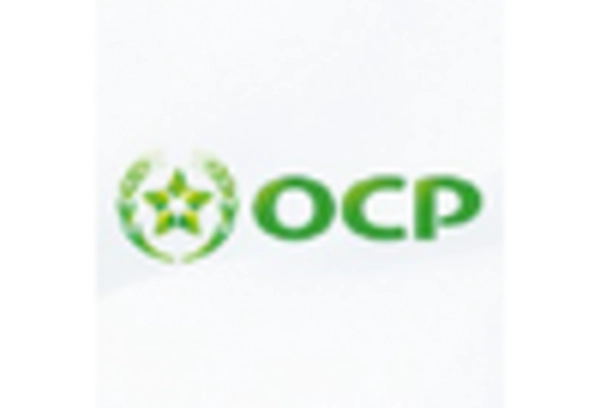Health and Nutritional Benefits
The increasing awareness of health and nutritional benefits associated with food additives is a significant driver for the Dipotassium Phosphate For Food Market. Dipotassium phosphate is recognized for its role in providing essential nutrients, such as potassium and phosphorus, which are vital for various bodily functions. As consumers become more health-conscious, they are more inclined to choose products that offer nutritional advantages. Market Research Future indicates that the demand for functional foods is on the rise, with a projected growth rate of 8% annually. This trend suggests that the Dipotassium Phosphate For Food Market will benefit from the growing preference for food products that not only taste good but also contribute to overall health.
Rising Demand for Processed Foods
The increasing demand for processed foods is a primary driver for the Dipotassium Phosphate For Food Market. As consumers seek convenience, manufacturers are responding by enhancing the shelf life and quality of food products. Dipotassium phosphate serves as an effective emulsifier and stabilizer, which is crucial in the production of various processed foods. According to recent data, the processed food sector is projected to grow at a compound annual growth rate of approximately 4.5% over the next few years. This growth is likely to bolster the demand for dipotassium phosphate, as it plays a vital role in maintaining the texture and flavor of processed items. Consequently, the Dipotassium Phosphate For Food Market is expected to witness a corresponding increase in consumption, driven by the evolving preferences of health-conscious consumers.
Regulatory Support for Food Additives
Regulatory support for food additives plays a crucial role in shaping the Dipotassium Phosphate For Food Market. Governments and regulatory bodies are increasingly recognizing the importance of food additives in ensuring food safety and quality. As regulations evolve to support the use of safe and effective additives, the acceptance of dipotassium phosphate in various food applications is likely to increase. Recent regulatory updates have emphasized the need for clean labeling and transparency, which aligns with the properties of dipotassium phosphate as a recognized food additive. This supportive regulatory environment is expected to foster growth in the Dipotassium Phosphate For Food Market, as manufacturers seek to comply with standards while enhancing product offerings.
Expansion of the Food and Beverage Sector
The ongoing expansion of the food and beverage sector significantly influences the Dipotassium Phosphate For Food Market. As new food products are developed, the need for additives that enhance flavor, texture, and stability becomes paramount. Dipotassium phosphate is widely utilized in dairy products, meat processing, and baked goods, among others. Recent statistics indicate that the food and beverage industry is anticipated to reach a valuation of over 5 trillion by 2026, which suggests a robust market for food additives. This growth trajectory indicates a rising demand for dipotassium phosphate, as manufacturers seek to improve product quality and meet consumer expectations. Thus, the Dipotassium Phosphate For Food Market is poised for growth, driven by the dynamic nature of the food and beverage landscape.
Technological Advancements in Food Production
Technological advancements in food production processes are reshaping the Dipotassium Phosphate For Food Market. Innovations in food processing techniques, such as high-pressure processing and advanced emulsification methods, are enhancing the efficiency and effectiveness of dipotassium phosphate as a food additive. These advancements allow for better incorporation of dipotassium phosphate in various food formulations, improving product quality and consistency. Furthermore, the integration of automation and smart technologies in food manufacturing is likely to streamline production processes, thereby increasing the demand for additives like dipotassium phosphate. As a result, the Dipotassium Phosphate For Food Market is expected to experience growth driven by these technological innovations.


















Leave a Comment